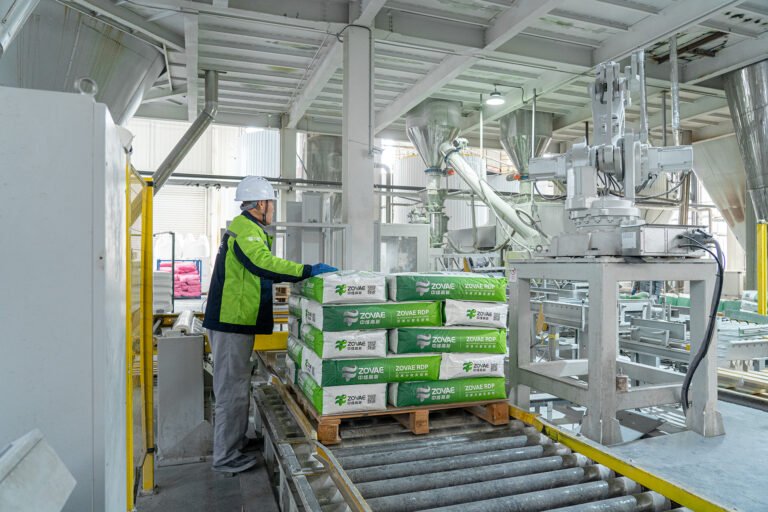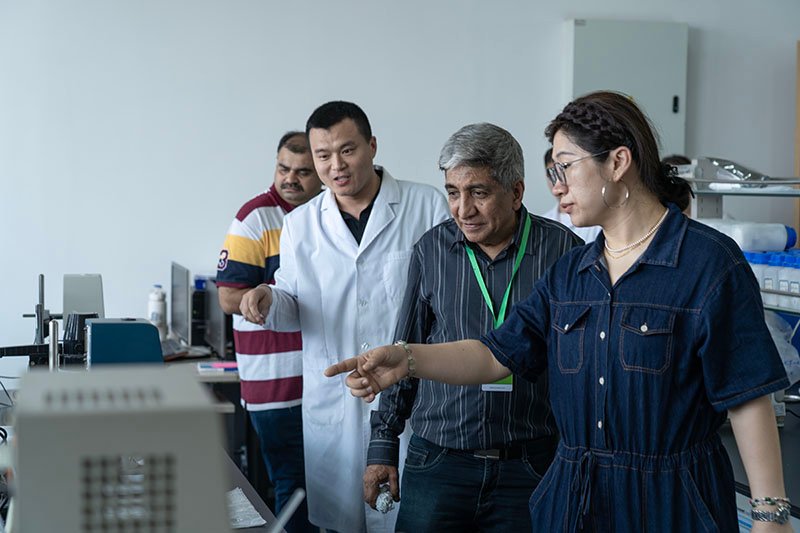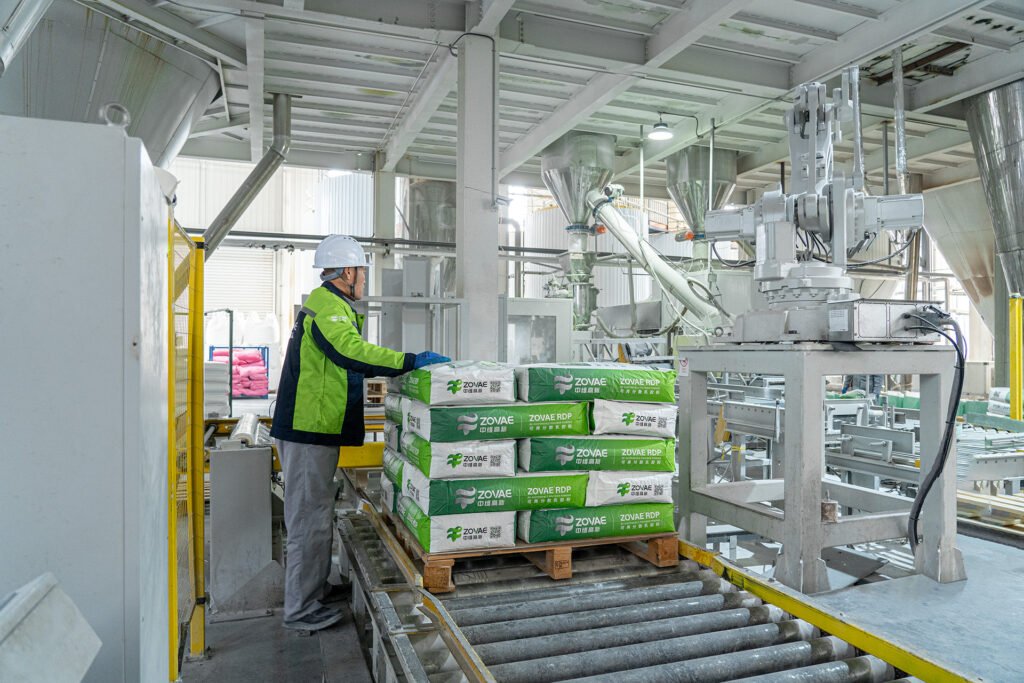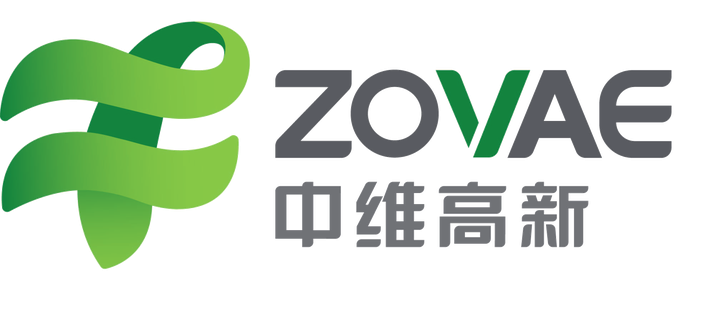
Merry Christmas ZOVAE
Wishing You Joy & Prosperity
Executive Summary
Superplasticizers, often referred to as high-range water reducers (HRWR), represent cutting-edge chemical admixtures that profoundly enhance concrete workability without necessitating additional water, or more critically, allow substantial water reductions while maintaining a desired slump. By slashing mix water content by 20–35%—and even more in finely tuned systems—these additives unlock exceptional early and 28-day compressive strengths, denser internal matrices, superior durability metrics, and unmatched placement properties. In stark contrast to traditional plasticizers, which achieve a mere 5–15% water reduction, high-range solutions herald a paradigm shift, proving indispensable for precast components, self-compacting concrete (SCC), long-line pumped concrete, and high-performance concrete (HPC) with minimal water-to-cement ratios (w/c). Zovae’s extensive portfolio encompasses PCE, SNF, SMF, and MLS technologies, complemented by bespoke technical services that customize grade selection, dosage rates, and addition protocols to align with your specific cement/SCM composition, environmental conditions, and construction methodologies.
This in-depth exploration bridges the molecular intricacies of superplasticizers to practical field applications, detailing how Zovae empowers modern concrete mix designs. Readers will uncover operational principles, precise blending guidelines, and diagnostic tools across pivotal uses such as SCC, precast, infrastructure, and durability-focused marine projects. Additional insights cover compatibility with other admixtures, rigorous quality control frameworks, safety considerations, historical evolution, emerging eco-trends, real-world case studies, actionable implementation roadmaps, comprehensive FAQs, and cost-benefit analyses. The mission is clear: equip professionals with the knowledge to leverage Zovae superplasticizers for consistent, high-caliber results—reducing material waste, amplifying durability, and championing sustainable construction practices.
Why have superplasticizers become the linchpin of contemporary concrete innovation? In an industry pressed by demands for efficiency, environmental stewardship, and resilience, their ability to optimize water usage while bolstering performance positions them as a non-negotiable asset for advancing infrastructure.
What Are Superplasticizers?
Superplasticizers are sophisticated dispersants designed to disrupt the natural flocculation of cement particles, liberating trapped water and minimizing interparticle friction. The practical outcome is transformative: at a consistent slump or slump flow, significantly less water is required; alternatively, with unchanged water content, far greater fluidity is achieved. Given that critical properties like strength, permeability, and durability are intricately tied to the w/c ratio, superplasticizers stand as a foundational element of advanced mix design strategies.
Unlike conventional plasticizers—often lignosulphonate-based—which provide limited improvements in workability or minimal water cuts, high-range water reducers such as PCE, SNF, and SMF are engineered for potent dispersion, adjustable slump retention, and broad compatibility with diverse supplementary cementitious materials (SCMs) and aggregate profiles. Their evolution from mid-20th-century plasticizers to third-generation chemistries reflects a relentless pursuit of performance, enabling concretes that meet stringent modern standards—think high-rise towers, intricate precast forms, or sprawling infrastructure enduring harsh climates.
Moreover, their impact transcends mere fluidity; they redefine possibilities in concrete engineering, allowing lower cement contents without sacrificing robustness, thus aligning with global carbon reduction goals. How does this translate to your project? Whether battling tight schedules or aggressive exposures, Zovae superplasticizers provide the flexibility to adapt and excel.
How Superplasticizers Work: A Technical Perspective
Cement particles, when mixed with water, instinctively clump together into flocs, ensnaring “inactive” water and forming a resistant network that hampers flow. Superplasticizers counteract this through a dual mechanism of action, meticulously tailored across their chemical families:
Adsorption and Repulsion
Release of Trapped Water and Uniform Hydration
The culmination? A concrete mix that glides at reduced water levels, consolidates with minimal voids, and cures into a tighter, tougher, more resilient structure. This is why Zovae superplasticizers are perfectly matched for low-w/c concretes that must still navigate pumps, traverse complex forms, and yield flawless finishes. Their historical trajectory—from lignosulphonates in the early 1900s to naphthalene-based breakthroughs in the 1960s and PCE innovations in the 1980s—illustrates a relentless drive toward efficiency, with each generation doubling water reduction potential. Consequently, whether you’re casting a slender precast beam or pumping to a skyscraper’s peak, Zovae ensures flow without compromise.
Types of Superplasticizers Offered by Zovae
Zovae delivers a comprehensive array of chemical families, each tailored to specific performance needs, material profiles, and economic constraints. Blends can be customized to balance cost-effectiveness with on-site reliability, ensuring versatility across applications.
Polycarboxylate Ether (PCE) — Next-Generation HRWR
Sulphonated Naphthalene Formaldehyde (SNF) — Robust, Cost-Effective HRWR
Sulphonated Melamine Formaldehyde (SMF) — Rapid Flow, Early Strength
Modified Lignosulphonates (MLS) — Plasticizer/Mid-Range Reducer
Zovae’s approach leverages R&D to match these chemistries to specific project demands—be it a high-rise needing PCE’s retention or a roadway suiting SNF’s affordability. Can your mix afford to settle for less than the ideal dispersant?


Applications of Zovae Superplasticizers
As a China-based leader with a worldwide footprint, Zovae crafts admixtures for challenging environments and varied regulatory frameworks, ensuring performance under pressure.
High-Rise Construction and Long-Distance Pumping
Precast Production with Complex Formworks
Infrastructure Projects: Bridges, Highways, Tunnels
Industrial Flooring, Pavements, and Marine Works
These applications extend to shotcrete, repair mortars, and lightweight concretes, showcasing Zovae’s adaptability across global standards like ASTM, EN, and IS. Furthermore, in emerging markets with variable raw materials, Zovae’s technical screenings mitigate risks of inconsistency, ensuring predictable outcomes.
Key Advantages at a Glance
Nevertheless, these benefits are maximized only with precise selection—Zovae’s expertise ensures the right chemistry for your mix and mission.
Potential Considerations
Dosage and Use Guidelines
Initial ranges depend on materials, climate, and use; validate via lab and field tests.
Typical Dosage Windows (by Binder Mass, As Supplied Unless Noted)
Addition Timing and Sequencing
Mix Energy and Temperature
Compatibility and Mix Design Synergy
Quality Control and Testing Protocol
Troubleshooting Guide
Field Application Notes by Segment
Sustainability and Cost-in-Use
Safety, Handling, and Storage
Implementation Roadmap
Frequently Asked Questions
Illustrative Case Snapshots
Why Choose Zovae?
Closing Thought
Superplasticizers have redefined concrete, unshackling it from water constraints through astute dispersion. With Zovae’s lineup—led by cutting-edge PCEs & backed by reliable SNF/SMF & MLS options—you craft concrete that flows effortlessly fresh & stands unyielding hardened: high strength, low permeability, reliable placement, pristine finishes. Share your cement/SCM profile, target slump/retention, transport, weather, strength/durability aims. Zovae will propose 2-3 options, initial doses, & a streamlined validation plan for peak performance with assurance.


Please leave your contact information, and Zovae’s sales team will provide you with dedicated service.
